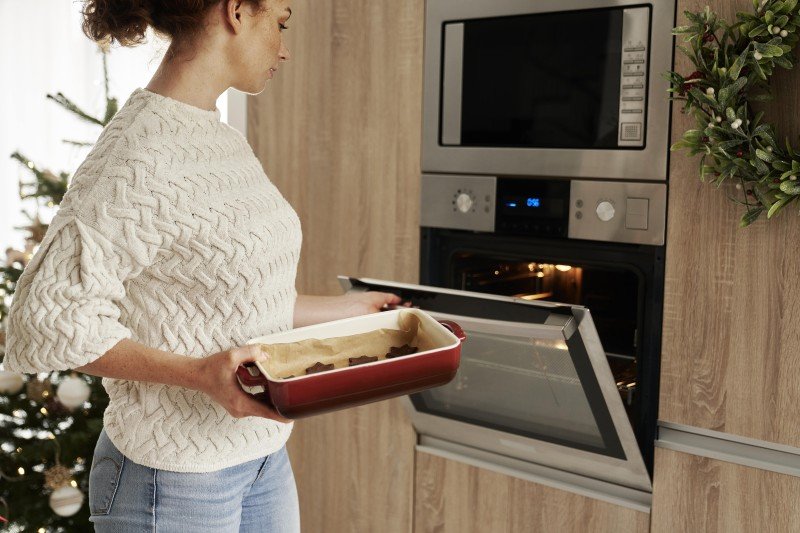How To Outsmart Your Boss On Oven And Hob
Understanding Ovens and Hobs: A Comprehensive Guide
When it comes to cooking devices, ovens and hobs are among the most important tools discovered in contemporary cooking areas. They play essential functions in meal preparation, transforming raw ingredients into scrumptious meals. Understanding the distinctions in between different kinds of ovens and hobs and how to choose the ideal one can make a significant distinction in cooking effectiveness and food quality.
This short article explores ovens and hobs in information, providing insights into their types, functions, benefits, and common FAQs. Whether you are a skilled chef or a newbie cook, this details will help you make notified choices for your cooking requirements.
Kinds of Ovens
Ovens can be found in numerous types, each designed for particular cooking methods and styles. Here is a detailed take a look at the most common kinds of ovens:
Type of Oven
Description
Best For
Conventional Oven
Uses heating components located at the top and bottom for even cooking.
Baking, roasting, and general cooking
Stove
Features a fan that circulates hot air for fast and even cooking.
Baking pastries and cookies, roasting meats
Steam Oven
Uses steam to prepare food, protecting wetness and nutrients.
Veggies and fish
Microwave Oven
Quickly cooks food utilizing microwave radiation.
Reheating and quick meals
Wall Oven
Built straight into the wall for space-saving cooking options.
Small kitchen areas and modern designs
Ability Level
Supplies numerous cooking modes consisting of baking, broiling, and toasting.
Versatile cooking requires
Types of Hobs
Hobs, likewise called cooktops, been available in various types based upon their fuel source and style. Comprehending these alternatives can assist in finding the ideal suitable for your kitchen setup:
Type of Hob
Description
Best For
Gas Hob
Makes use of gas flames for cooking, offering instant heat control.
Traditional cooking methods
Electric Hob
Uses electric coils or induction elements to heat pots and pans.
Even heat distribution
Induction Hob
Employs electro-magnetic energy to straight heat pots, offering quick and efficient cooking.
Energy-efficient cooking
Strong Plate Hob
A kind of electric hob with solid plates that requires time to warm up however keeps heat well.
Sluggish cooking
Ceramic Hob
Functions a glass-ceramic surface permitting simple cleansing, with electric heating elements listed below.
Aesthetic appeal
Aspects to Consider When Choosing an Oven and Hob
Choosing the best oven and hob mix requires cautious factor to consider of several aspects. Below is a list of vital elements to remember:
Cooking Style
- Are you a daily cook or a periodic baker?
- Do you choose steaming or frying?
Kitchen Size
- What space is readily available in your kitchen for the home appliances?
- Will you require built-in or freestanding models?
Fuel Source
- Do you have access to gas, or would you choose electric?
- Are you thinking about induction cooking innovation?
Budget
- What is your budget for buying an oven and hob?
- Are you thinking about a high-end design or a more cost effective option?
Energy Efficiency
- Are you looking to minimize your energy usage?
- Do you prefer appliances that feature high-efficiency scores?
Benefits of Ovens and Hobs
Both ovens and hobs bring distinct advantages to the kitchen. Here's a summary of some benefits:
Ovens:
- Versatility: Able to manage a large range of cooking methods from baking to roasting and broiling.
- Constant Results: Even heat distribution supplies reputable cooking outcomes.
- Big Capacity: Ideal for big meals and batch cooking.
Hobs:
- Control: Gas hobs provide instantaneous heat changes, useful for accurate cooking.
- Performance: Induction hobs are understood for their quicker heat-up energy and times effectiveness.
- Independent Cooking: Multiple hobs enable for cooking a number of dishes all at once.
Selecting the ideal ovens and hobs is important for anyone seeking to improve their cooking skills and kitchen performance. By comprehending the numerous kinds of each device, alongside their benefits and features, consumers can make educated choices that cater to their culinary practices and preferences.
As kitchens evolve, so do the technologies surrounding cooking appliances. Investing in the best combination of an oven and hob can cause better cooking experiences, greater food quality, and even pleasurable time spent in the kitchen.
Often Asked Questions (FAQs)
What is the distinction between convection and conventional ovens?
- A convection oven utilizes a fan to distribute air for even cooking, while a standard oven relies only on leading and bottom heating components.
How do induction hobs work?
- Induction hobs utilize electro-magnetic fields to straight warm pots and pans made of magnetic products, leading to faster cooking times and more energy effectiveness.
Are gas hobs more secure than electric hobs?
- Safety depends on usage and setup. Buy Oven Online require proper ventilation and can provide a fire threat, while electric hobs might posture risks of burns due to their hot surfaces.
Can I bake in a steam oven?
- Yes, a steam oven can be utilized for baking, often resulting in moister and fluffier baked products, especially breads and pastries.
What should I try to find in an integrated oven?
- Try to find functions like capability, cooking modes, energy effectiveness rankings, and ease of cleansing.
By thinking about the details and guides provided in this post, readers can easily navigate the world of ovens and hobs, making sure that they pick the best devices to fit their culinary requirements.
